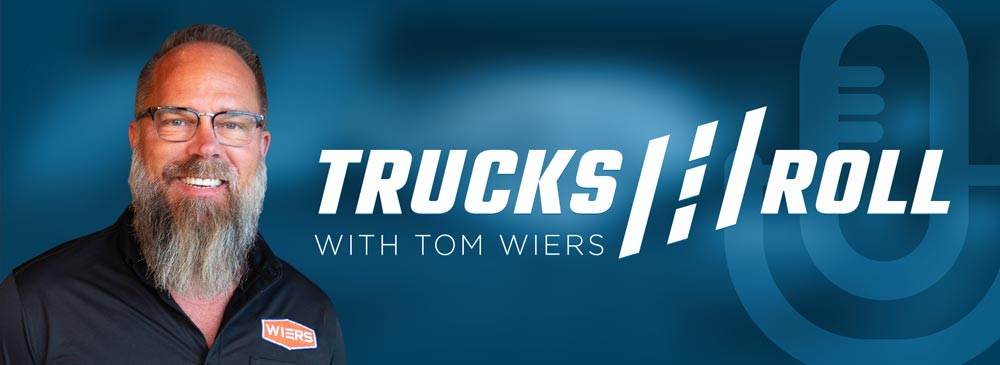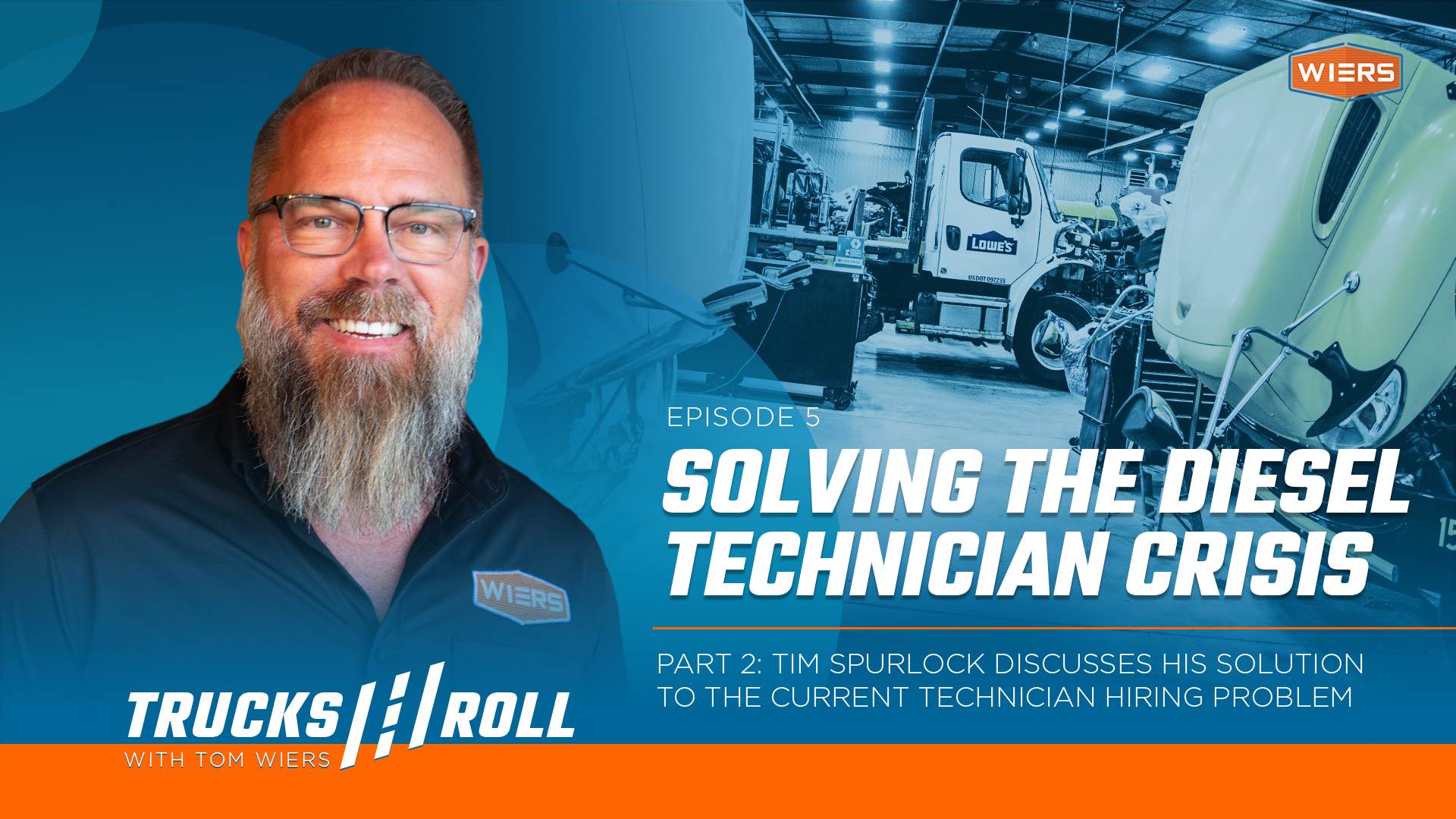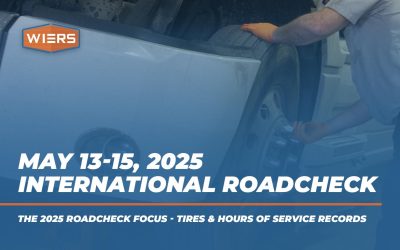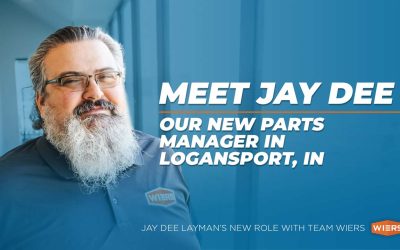
Recruiting to Solve the Diesel Tech Crisis – Trucks Roll Podcast Ep. 5
Ep. 5 Part 2: How American Diesel Training Centers are Helping Train a New Generation
In part 2 of our interview with Tim Spurlock, we discuss the unique approach of American Diesel Training Centers when it comes to recruitment, training, and placement. Whether you’re a business looking to find technicians, or an individual who may be considering a career as a diesel tech, this podcast will give you great insights into this amazing program that will empower a new generation of diesel technicians to find a lifetime of lucrative employment that makes a difference.
We at Wiers are experts in this field and can help you keep your vehicles on the road and earning. Visit us at wiers.com today to learn more about our services and fleet partnership plans today!
What You’ll Learn:
- American Diesel Training Centers prepares individuals for a lifetime of employment.
- The curriculum is designed specifically to prepare individuals to contribute immediately as diesel techs.
- This program often sees immediate return on investment for both employer and student.
Here is the transcript for Trucks Roll Ep. 5:
Tim Spurlock: “American Diesel is going to connect you, potential student, with me, potential employer. If I like you, if I think you have a good attitude and aptitude, I’m going to hire you and I’m going to sponsor you in that program.”
Tom Wiers: Hi. This is Tom Wiers with the Trucks Roll podcast. We’re going to have another conversation today with Tim Spurlock from the American Diesel Training Centers, and this time we’re going to talk about how Tim and his company have come up with a creative and innovative way to help solve this technician problem. It’s going to be a really great podcast. Thank you for tuning in. Tell us about your business model and what you’re doing differently to help the industry solve this problem.
Tim Spurlock: Yeah. The genesis of this idea, it’s really pretty basic, right? And this is what we always say, is that the training is the easy part. It’s the finding that’s the hard part. And that’s really what I’ve consistently talked about it since we founded the business, is that there’s a huge pipeline of people out there. Right now, companies just don’t really have the ability to get to them. And I used to have this slide, back in the days when I actually met live in conferences and did that kind of stuff, that showed this little boy sitting up in bed. And people today don’t wake up saying, “I want to be a Diesel mechanic.” The internet is real. If you really look also, blame’s not the right word, but if I could attribute one thing, it’s really the internet. I mean, the internet has been wildly helpful to all of us. We couldn’t imagine life without it. But what it’s done is, it’s spawned so many different career opportunities for people to take advantage of that are maybe a little nontraditional, right?
Tom Wiers: Yeah.
Tim Spurlock: Yeah, you don’t want to go to college, maybe to be an engineer or whatever or business, but you could learn to code, right? Then you can sit in the comfort of your home and you can code, and you can learn Python and all this other stuff and you can make really good money. So, there are so many opportunities available. Many of these get pushed down from schools and parents starting from kids are little, right? And so you got the college-for-all mentality, but even for those non-college-or-all types, diesel and heavy equipment and trades and dirty stuff, it just gets lost in the shuffle. Because even when you talk skilled trades, notice schools promote sexy stuff, right?
Tom Wiers: Sure.
Tim Spurlock: Like drone repair or CNC or robotics, right? In my entire life, I don’t know that I’ve ever seen a billboard or a commercial for an automotive or truck program at a local community college. So, it’s really just there’s so much competition out there right now, even including just going straight into the workforce and working at a warehouse or doing whatever. There’s so much competition in other professions that the skilled trades just completely get passed over. And it really starts early in elementary school.
Tom Wiers: Yep. So, the traditional vocational track for a young person who wants to become a technician is what? Typically a two year program. But your program is wildly different. Tell us about specifically-
Tim Spurlock: Yeah, yeah. It’s-
Tom Wiers: … your approach.
Tim Spurlock: … wildly different. Yeah. So, again, our approach is all about finding.
Tom Wiers: It’s really very creative.
Tim Spurlock: Right? Thank you. Remember, US education has had decades to, I definitely don’t want to say perfect, but to iterate, to develop their system and all that stuff. And it’s, honestly, it’s just too slow. And just too monolithic to deal with these fast action and quick movement necessary to take for companies to take advantage of opportunities to fill positions. It just doesn’t work, right? So, our approach was, again, back to those companies that we talked to. Dozens of company owners. Just like you would say, “Okay, here’s what I need. Find us someone who will show up on time, have a good attitude, and is proficiently basically trained,” right? More than sweeping floors and stuff like that.
And so we just decided to build the model backwards. Instead of the current model that everybody uses, it’s evolved over all these decades. So, our curriculum literally came from where we met, a technology management council task force in 2017. They went out to companies just like yours and they said, “What skills do you want in an entry level diesel mechanic?” Guess what came back? Engine internals didn’t come back. Drive train didn’t come back, right? Brakes, wheels/tires, electrical, those three areas right there account for 64% of all repairs. I mean, you guys are a data company. I know that you know that too, right?
Tom Wiers: Right.
Tim Spurlock: I’m sure those are probably your numbers are similar. So, that’s exactly what we built the curriculum around, was just 420 basic tasks. But more importantly, we focus on tapping into that pipeline of people who are either in, we call them they’re in high effort, low skill, low wage jobs, right? They’re working in a warehouse. They’re working really hard. They’re working fast food. They have to work to support their family. They’re never going to go to a community college or a typical trade school. They’re never going to do that. But so that’s who we target. So, really what we’re really good at is targeting that demographic, convincing them, not convincing them, but presenting a great opportunity for a steady, good-paying career with essentially employment for life.
And the portal to get through is not a two year program where you got to take math and English and all that kind of stuff. The portal to get through it is a intensive five week program. And many times we have companies on the other end that are waiting for these folks when they do get out of the program, or even many times more will say, “Hey, American Diesel is going to connect you, potential student, with me, potential employer. If I like you, if I think you have a good attitude and aptitude, I’m going to hire you and I’m going to sponsor you in that program.” And we’ve really been able to work with our financial model so that it’s not a heavy lift and it has immediate return on investment implications.
Tom Wiers: Yeah. When I visited you in Columbus, you told me a story that it’s always stuck in my memory about one of your students who, if I remember the story correctly had, after high school, had always wanted to be a technician, but just didn’t have the money to go to a vocational school. So, they were doing one of those jobs that you were talking about, whether it was, I can’t remember if it was a warehouse or what it was, and then they learned about your program and they came to you and said, “This is what I’ve always wanted to do.”
And you guys afforded them the opportunity to actually make that transition. I want to say they were maybe 24 or 25 or something like that. I thought that was a great story. And it was really unique that, in this day and age, that there are people out there that do want to work on diesel trucks and turn wrenches. It’s hard work. You get dirty. It’s greasy. Sometimes you work outside. And so it was inspiring to me just to hear people that they still want those jobs.
Tim Spurlock: That they are there, right? But that’s what I mean. The reach in the current system is just too far, right?
Tom Wiers: Yeah.
Tim Spurlock: And that’s not people being lazy. That’s not people not wanting to go to school. That’s the prototype of the folks who come to our program. Very few recent high school graduates come to our program. Our average age is about 25 years old.
Tom Wiers: Wow. That’s great.
Tim Spurlock: Yeah. Which we want people to have some maturity, right?
Tom Wiers: Sure.
Tim Spurlock: We want people maybe to have failed on some stuff. But the interesting thing is, we always do this. Every class that comes in, both Columbus and Cincinnati, we sit there for probably an hour and a half and we literally go around the room and we ask basic questions, right? Like, “How many of you considered going to a post secondary program in trucking?” Invariably 10 to 15 hands will go up, right? How many of you investigated, and we’ll throw out a few program names. Same amount of hands go up every time. We’ll say, “Okay, why didn’t you choose to do that?” 100% of the time they get it right both times. Somebody will say, “Couldn’t afford it.” Somebody will say, “I don’t got the time,” right? So, that’s the-
Tom Wiers: Yeah. They’re probably working.
Tim Spurlock: Yeah. Exactly, right? They were working. But they were working in just jobs with no… They’re going to bounce from job to job to job. I’m just going to riff for two seconds, but it does kind of drive me crazy. We’ll talk to companies about interviewing people and they’ll say, “Well, this person’s had five jobs in five years.” They’re all dead-end jobs, right?
Tom Wiers: Right.
Tim Spurlock: I mean, there’s no upside, so that’s exactly what’s going to happen. They’re going to reach a point where they’re just done with that job and they go. It’s not like they’ve been unemployed or they’re not working, but they’re hopping jobs because they’re in jobs with no future. That’s the problem.

Tom Wiers: What’s the cost of a traditional two year vocational program if you go to UTI or Lincoln Tech or something like that? I don’t even know. What is it? Is it a $50,000 investment for two years?
Tim Spurlock: It depends, but it’s between 40 and $50,000.
Tom Wiers: 50.
Tim Spurlock: And they’re 13 month programs. Between 40 and 50,000.
Tom Wiers: Oh, they’re 13 month. Okay.
Tim Spurlock: Yeah. 13 month. Here’s the interesting thing, right?
Tom Wiers: And they’re full-time? Those programs are full-time?
Tim Spurlock: Full-time. Yeah. Full-time. Full-time. Full-time.
Tom Wiers: Okay. Gotcha.
Tim Spurlock: And we’re big believers in the community college system, right? We need more of them. But even community college these days, many programs are 15 to $20,000, right?
Tom Wiers: Yeah.
Tim Spurlock: So, even community college for a lot of people, a Pell Grant’s going to get you, which was supposed to cover all of your educational needs when Pell Grants first came out, you’re going to get about $6,400 a year, if you qualify for a Pell Grant. The rest you’re either going to have to pay cash or make up for in loans. In student lows.
Tom Wiers: So, the student loan problem that we all hear about. And tell me about your program.
Tim Spurlock: Exactly, right?
Tom Wiers: Right. Tell me about your program. Five weeks, and then how do your students pay for that? Or do they have jobs while they’re going to your program? Or can you walk us through that a little bit?
Tim Spurlock: Yeah. So, it’s been a while since we talked, right?
Tom Wiers: Right.
Tim Spurlock: But so the majority, Tom, of our students now, 75% of our students come to American Diesel already employed by a company, right? So, either the company finds them, right?
Tom Wiers: Mm-hmm (affirmative).
Tim Spurlock: Hires someone, like, “I really like you. If you were just a little bit trained.” They hire them and they send them to us. More often, way more often, a company says, “I need your help.” So, we design private labeled recruiting campaigns on that company’s behalf and we’ll target specific geographic areas based on that company’s needs, and we’ll recruit hundreds, sometimes thousands of potential people. And we have a team that calls through all that. And then we put the final candidates in front of the company and that company literally hires them based on attitude and aptitude. And this is the key. When they come to American Diesel, they are on a payroll. Many times they’re wearing uniforms. They’ve already met their employers, their service manager. They’ve been onboarded. And all of the angst, right? Is taken out of folks because they know that when they get done… Well, they’re already making money. Because these folks, they can’t afford to come even five weeks, right? So, it’s five weeks full-time.
Tom Wiers: Right. Sure.
Tim Spurlock: They can’t afford to come and not have income. Very rarely can they afford that. So, they know that when they’re done, they’re going right to work. And that increases the quality of candidates exponentially.
Tom Wiers: So, Tim, a player like Wiers would come to you and say, “We’d like to sponsor,” or, “We’d like to get a couple technicians.” What I’m hearing you say is, if we’ve got candidates, we can send them to you. That’s in the Columbus, Ohio or Cincinnati, correct? Either one of those locations. And then you’ll-
Tim Spurlock: That’s correct.
Tom Wiers: … if we don’t have somebody, you will do the recruiting, present somebody, and we essentially hire them. They’re paying their wage. Tell us about the economics of the school. How does your company get paid? Who pays that? What does that look like?
Tim Spurlock: Yeah. This is what’s really unique about what we do. And yeah. So, Tom, we work with companies with locations literally all over the United States, right? We’ve had trainee students from Washington State, Texas, Florida, New York, Massachusetts, all over the place. But the economics of the program are what’s really unique. So, we don’t do any type of federal student loan Title IV funding because we don’t believe in it. And as we all read 24/7, right?
Tom Wiers: Yeah.
Tim Spurlock: No one wins, really, in that model. So, what we did was we partnered with an outstanding philanthropic nonprofit. And so how the school is funded is that nonprofit, they set aside a tranche, bucket, whatever you want to call it, of funds that we dip into every time a student comes to American Diesel, which funds their training and education. Now, the nice thing about that is that we’ve built in, just in our model, it actually becomes a rock solid retention strategy for companies, right? So, what we do is, and we’ll just use Wiers as an example. So, let’s say we do a recruiting campaign for Wiers. We handle all the costs of the recruiting campaign. We send folks to Wiers and think, “Wow, this person’s really great.” You hire them. You send them to us, right? The only thing that we would ask Wiers to pay for is just get them here, right? Get them here. And we put them up in a really nice all-suites hotel. Everybody has their own room and a very modest food stipend, right?
It’s about 2,500 bucks per person per company. But what we really like about this model is, is that we don’t have to go to companies and say, “I’m going to charge you several thousand dollars for this training.” What we do is, like I said, we reach into that pot of money, which funds a training of an individual student. Here’s the key. The student or trainee is the one who is the obligor who signs the paperwork to make the payments back with a very modest interest rate. I’m talking a 3% interest rate.
Tom Wiers: Wow.
Tim Spurlock: Very modest payments back to fund their education. And by far, the best practice is, is that companies tell these folks, “As long as you work for me, I’m going to make your payments for you. But if you quit on me, the payment follows you.”
Tom Wiers: You’re on your own.
Tim Spurlock: And so the payment is $317 a month For a max of 48 months. And that also covers about a $3,500 tool set-
Tom Wiers: Great.
Tim Spurlock: … that every student leaves with. So, the cost of the program funds the training, a tool set, and like I said, the payback is about 317 a month over 48 months.
Tom Wiers: That’s fantastic.
Tim Spurlock: Yeah. And Tom, in terms of that model, the final point that I want to make on it is, is that we have companies that come to us and they say, “We’d just like to pay cash for this.” And everybody likes cash, right? But I don’t like it because we’re not dealing with robots here. We’re dealing with people and stuff happens. We’ve seen family issues happen. And so I hate to get that call from a company that goes, “Wait a minute. I just wrote you a check and this person quit on me after three months,” right? And I’ve gotten those calls. And so this allows companies to really de-risk not having to write a check to cover all the tuition costs of American Diesel.
Tom Wiers: Yeah. They have-
Tim Spurlock: So, that’s really what we’re about.
Tom Wiers: Yeah. They have skin in the game, right?
Tim Spurlock: Yeah. They have skin in the game, right? And it’s a great retention model for companies, right? Because, “Hey, as long as you work for me, you’re going to get training. You’re going to get paid training with no payments on the back end as long as you stay with me,” right?
Tom Wiers: Yeah. That’s fantastic.
Tim Spurlock: Yeah. That was really the game changer, right? And there’s an article about it and I can send you to it. It was in the New York Times back in last April, right? Just about the model.
Tom Wiers: Cool.
Tim Spurlock: But we worked really hard. And the whole thing is built with the student trainee in mind. But the whole company angle was just this outgrowth out of it. It’s like, “Okay, this is perfect because everyone has skin in the game.” And here’s one other thing. I have skin in the game. If we don’t produce good quality people who go to work and payments are made, right? Whether the companies are making the payments or whether the student individual’s making the payments, the investors go away, right? They’re gone. It’s not like the government that just keeps throwing good money after bad at crummy programs. I have to produce quality people. And again, we are not perfect, right? But we’re better. We’re right more than we’re not.
Tom Wiers: Yeah. That’s great.
Tim Spurlock: So, that’s the real important thing.
Tom Wiers: So, Tim, some of the listeners might be interested. When one of your students graduates, what are you seeing these days? What is a typical wage? And I know it probably varies based on the country and such, but do you have a range that you could share with us today?
Tim Spurlock: Sure. Yeah. I mean, I can tell you a range. We keep very tight data. We have to, right? For compliance and stuff. But our average salary is just under $42,000 a year. So, what is that? A little under-
Tom Wiers: 20 bucks an hour.
Tim Spurlock: … 20 bucks an hour?
Tom Wiers: Yeah.
Tim Spurlock: That’s about the average wage. It’s about 20, 21 bucks an hour.
Tom Wiers: You know-
Tim Spurlock: And the crazy thing is, Tom, is this because-
Tom Wiers: No, I was going to say, that’s fantastic. Because I know from our experience that if you bring somebody in the organization, and that’s basically an apprentice level at Wiers, but if they show any aptitude whatsoever and just get a little bit of experience, they’re going to get bumped up. It used to be you’d bump them a quarter. Now, it’s a buck or maybe two bucks. And so I could see somebody like that making $25 an hour within a relatively short amount of time, quite honestly.
Tim Spurlock: It’s funny. I was just texting her last night. One of my favorite stories is a young lady who came. This is three plus years ago. And it was five o’clock. And she came in. She had a little boy with her. And I was just thinking, “There is absolutely…” I did her interview. I mean, there was absolutely no way she’s coming. Not a chance in a million years. But four weeks later, I walk out in the shop and there she is, right? That gal is now making at least $60,000 a year. And her company has sent her all over the country for training, engine training, all this great stuff. I’m going to give you. This is the key.
So, she texted me last night. I literally said, “You’re going to be running that place, that company, someday.” And she goes something like, “I know.” She goes, “Other companies try to scoop me up all the time, but I love it so much here I can’t leave.” And that’s the key. I get that question all the time. Like, “I can’t keep anybody.” Treat them like they are your most valuable possession. People don’t leave because of money, typically. They leave because of bad boss or bad culture, right? And so yeah, I love that story so much. And this gal is going to be wild.
Tom Wiers: Yeah, I know.
Tim Spurlock: She already is. She’s already the top tech in the-
Tom Wiers: You raise a good point there because when we’re out hiring service advisors or service managers, it’s so much, much better for everyone involved if they have some technical experience. And to be a service advisor, you don’t have to have 20 of years of wrenching experience. But if you have the basic understandings, if you’ve worked on a piece of equipment, if you understand what it’s like to be on the shop floor, that goes such a long way. So, to your point, I mean, not only is this training great to get technicians into the industry, but I could see where it could produce a lot of good service advisors and future service managers and such. So, that’s another thing. Yeah.
Tim Spurlock: We’ve had folks from our program hired directly into service writer or service advisor roles, for sure, right? And so we’re so busy with truck. I mean, I believe that our program is appropriate for service advisors. There’s so many different things that we can do. Because again, the training is the easy part. It’s the finding that’s the hard part. That’s the problem that we solve. There are phenomenal schools out there that do great, awesome training jobs. Our instructors are fantastic. We only got five weeks, nine hours a day. They’re drinking through a fire hose. But what we’ve been able to do that the typical school can’t do because they’re understaffed, they’re not very good at it… I mean, come on. Community colleges are recruiting for a hundred different programs. We recruit for one and we’re really good at it, right? So, we get those folks that a community college is not going to get because they’re not very good at recruiting and because the program is too long or too expensive, right? And that’s really what we’ve turned that model on.
Tom Wiers: So, Tim, real quick, if somebody’s is listening to this podcast, they engage you, they have a candidate, they go through the program, the employee comes back, what’s their skillset going to be? Just set an expectation. They’re not going to be overhauling engines. Of course, we don’t want them overhauling engines, but they’re going to be able to do what?
Tim Spurlock: So, we would say that these folks, we call them PM tech plus, right?
Tom Wiers: Okay. Yep.
Tim Spurlock: They’re going to be able to do a very thorough PM. They’re going to be able to plug in a diagnostic tool. They’re going to be able to change some parts, right? They’re going to be able to do brakes. They’re going to be able to do wheels and tires. They’re going to be able to do those 64% of repairs that all shops have. And then your more experienced techs can work on the more complicated stuff. But I mean, I think that’s the thing. I think the one thing we found, Tom, is that companies have to have, and we’re actually working on this with a partner, they have to have an additional… You can’t just stop once you get them, right? From us. They have to have that additional apprentice or levels of training as they progress.
Because again, people quit because of bad boss, bad culture, lack of training, mostly. And so that’s the part that I always get from people. “I can’t find anybody. I can’t keep anybody.” Yeah. I can solve the first one. I can kind of solve the second one. But that’s what they’re going to get. And we have some folks who after, like I’m telling you about the story, I mean, we have some folks who, I mean, we have a guy who runs that entire service operation for a huge dealership, right? We have folks who are the top diagnostic tech at their dealers. We’ve really produced some really solid talent and are really proud of that. I’m going to give you one other thing that makes this so much fun, is the average person who comes to American Diesel gets a $16,000 a year raise from what they were making prior to coming in.
Tom Wiers: Wow. Is that right?
Tim Spurlock: Right? And so-
Tom Wiers: That’s fantastic.
Tim Spurlock: … we track all this stuff. Third party, right?
Tom Wiers: Yeah. Wow.
Tim Spurlock: And so that’s like, you talk about in today’s news and culture, and all you hear about is doing well by doing good and having a social impact on the world or on your community. And I just get so frustrated when I read some of these news stories and all this kind of stuff of just bad things happening in bad neighborhoods. We can fix that, right? I mean, these are where the future technicians of the world lie. And it may be some rural community like I came from. It may be an inner city community. It may be a middle class neighborhood. It opens up the whole portfolio of talent to take advantage of.
Tom Wiers: Sure. Hey, thank you for tuning in. We’ve got one more session with Tim Spurlock, where we’re going to be talking about the future of not only his company, but also the future of the industry and even some of the other technical fields that we’re having problems with when we talk about skilled labor. So, appreciate you. But in the meantime, if we can do anything, go to wiers.com and check out some of our products and services. We’re here to support your commercial truck needs, maintenance, and repair. And again, this is Tom Wiers and I appreciate you joining me for the ride on the Trucks Roll podcast.
Links:
- Share your thoughts and connect with us on Facebook
- Check out more videos on Youtube
- Listen to the Previous Episode
